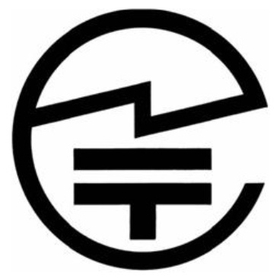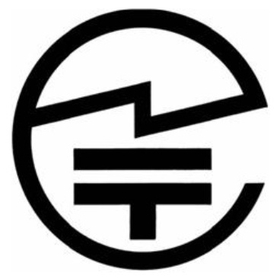news list
latest news

What is Technical Standards Compliance Certification (Giteki)?
"Technical Standards Conformity Certification," commonly known as "Giteki," refers to the "government approval" necessary for safely using wireless devices (such as smartphones, Wi-Fi routers, transce…
1~7 item / All 7 items
-

What is an anechoic chamber? Is it really necessary?
An anechoic chamber is a "special room" used to test the performance and safety of wireless devices. In a regular room, invisible waves from smartphones, Wi-Fi, and televisions are present, making it impossible to conduct accurate tests on devices. Therefore, an anechoic chamber is a special space that "completely shuts out external waves" and also ensures that "waves inside do not leak outside." When is it used? - Testing and inspection of wireless devices - Testing for obtaining technical standard conformity certification (Giteki) - Confirming that there is no interference from waves to other devices In other words, it is "an essential place for creating accurate and reliable wireless devices." What is the inside of the room like? - The walls, ceiling, and floor are covered with "sponge-like materials that absorb waves (wave-absorbing panels)." - The entire room is covered with a metal shield to prevent external waves from entering. Why is it so important? Wireless devices can significantly impact medical equipment, airplanes, and fire department radios, depending on where they are used. That is why it is crucial to thoroughly verify that they emit waves correctly and safely in a place free from external influences, which is the anechoic chamber.
-

A clear explanation of how to obtain a technical standards conformity certification!
To sell and use products that utilize wireless technology in Japan, it is necessary to obtain a national certification called "Technical Standards Conformity Certification (Giteki)." So, "how do you obtain Giteki?" 【Step 1】 What products require Giteki? Devices that communicate using wireless technology that emits radio waves are subject to this requirement, such as smartphones, Wi-Fi routers, Bluetooth earphones, wireless mice, wireless transceivers, IoT devices, etc. 【Step 2】 Where can you get the assessment done? The assessment for Giteki is conducted by a third-party organization recognized by the government, called a "Registered Certification Body." Examples include the Telecommunications Engineering Center (TELEC) and the Japan Maritime Bureau (JCI). 【Step 3】 What do you need to submit? For the assessment, you need to submit documents and samples such as the following, to check for "signal strength," "frequency accuracy," and "radio interference": Product technical specifications (such as frequency and output), circuit diagrams or design drawings, and the actual product (or prototype). 【Step 4】 If you pass the test, you will receive the "Giteki mark"! 【Step 5】 After that, you can freely sell and use the product!
-

[Model Number Change] The coaxial connector of the UHF band RFID sheet antenna "FZSH200J/FZSH400J" has been changed to an SMA plug.
Based on customer requests, the coaxial connector of the UHF band RFID sheet antenna "FZSH200J/FZSH400J" has been changed from [SMA jack] to [SMA plug]. Consequently, the model number suffix has been changed from "J" to "P," resulting in "FZSH200P/FZSH400P." For details, please download the catalog and check.
-

[Model Number Change] The model number of the UHF band RFID flat antenna has been changed.
The UHF band RFID flat antenna "FP9207/FP9207L" has been changed from "FP9207L" to "FP9207L-2." The specifications will remain the same as "FP9207L." Please note that there are no changes to "FP9207." For details, please download the catalog and check.
-

[Model Number Change] The model number of the UHF band RFID shelf antenna has been changed.
"FZ9205/FZ9206" has been discontinued and unified into "FZ9205-2." The specifications will be the same as "FZ9205." For details, please download the catalog and check.
-

[New Product] UHF Band RFID Beam Variable Antenna [Expected to Reduce Misreads with Detection Area Control]
We have released an active phased array antenna that can vary the beam radiation direction in three directions based on external signals. By switching the radiation area, it is possible to respond only to specific areas. This allows it to be utilized as an RFID gate with fewer misreads. When used as a shoplifting prevention gate, it can be set up so that customers with RFID tags approaching the gate do not trigger an alert, thereby reducing stress caused by misidentification. For more details, please download and check the catalog.
-

Efforts towards the environment
Pikou Electronics completed the relocation of its headquarters factory from the Tsunashima factory to Shin-Yoshida Higashi in Kohoku Ward, Yokohama City, in December 2017. The new building was constructed with the aim of achieving a sustainable society by introducing high-efficiency air conditioning and lighting systems, solar power generation facilities, and utilizing high-insulation materials to promote energy conservation, with the goal of achieving ZEB (Net Zero Energy Building) status. In January 2018, it received the highest rank of five stars in the Building Energy Efficiency Performance Labeling System (BELS) and obtained the "ZEB Ready" certification. Additionally, a third-party evaluation based on the Building Energy Efficiency Performance Labeling System (BELS) recognized that it has performance equivalent to ★5 (0.6≧BEI). We aim to develop and sell antennas that contribute to saving wired communication resources through wireless communication, sell antennas for smart meters that are effective in reducing power consumption, and develop and sell RFID antennas and their peripheral devices that enhance logistics efficiency. Furthermore, we will promote the efficiency of internal operations and activities to improve product quality, striving to reduce waste and conserve resources by lowering the defect rate within processes.